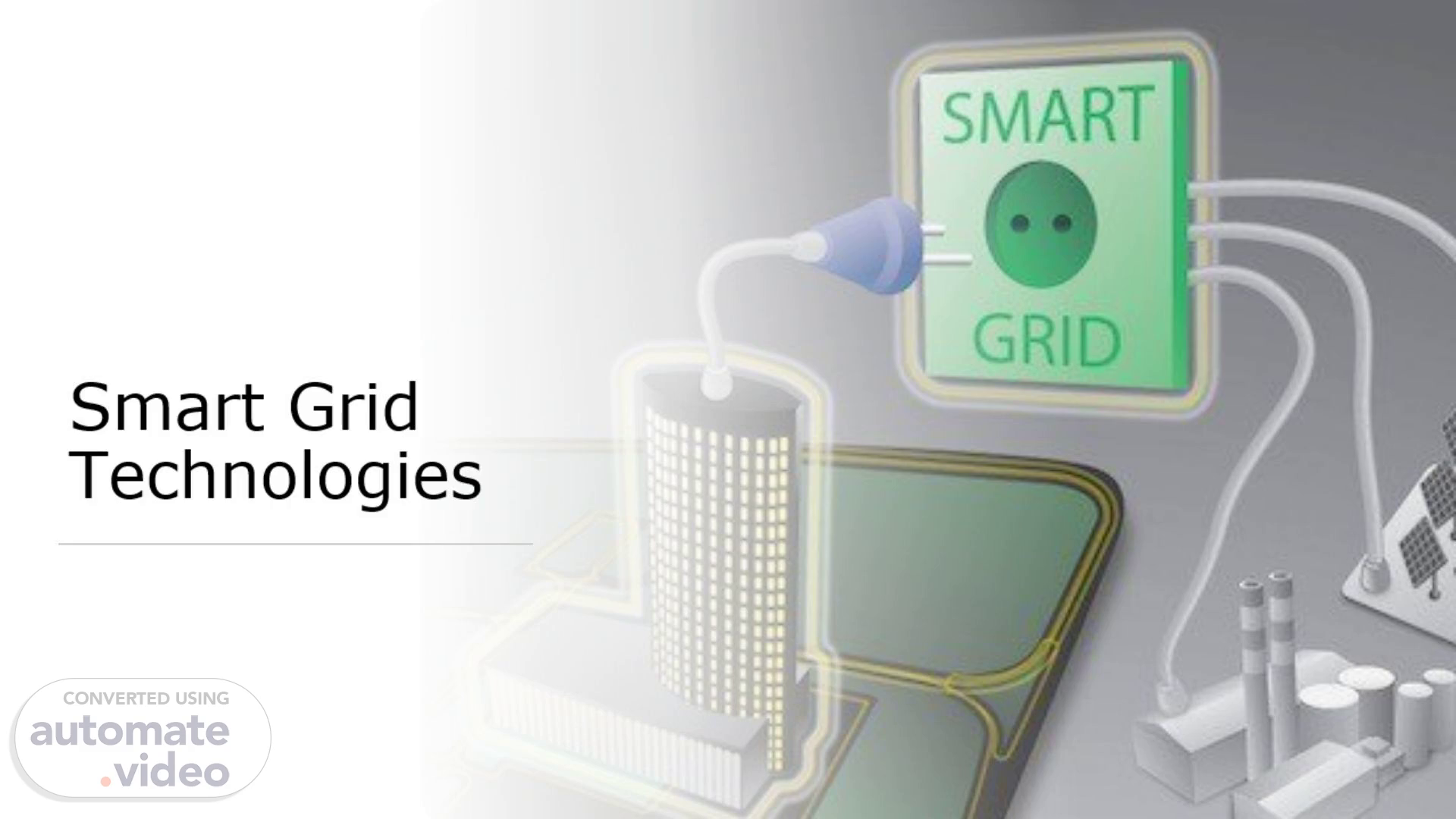
Smart Grid Technologies
Scene 1 (0s)
[Audio] Smart grids are here to revolutionize the traditional power grid by integrating advanced communication, control, and monitoring systems to enhance efficiency, reliability, and sustainability in energy distribution. In this course we will discuss about smart grid, its components and implementations in India..
Scene 2 (20s)
Chapter 1: Smart Grid. [image] -LHVVNS.
Scene 3 (26s)
[Audio] What is Smart Grid? A smart grid is an advanced electrical grid system that uses digital technology to monitor and manage the flow of electricity more efficiently. It allows for two-way communication between utilities and consumers, enabling better control and optimization of energy usage. Smart grids also incorporate renewable energy sources, energy storage, and other advanced technologies to improve reliability, reduce costs, and minimize environmental impact..
Scene 4 (1m 3s)
[Audio] Conventional grids refer to traditional electrical grid systems that primarily rely on one-way communication, one-way flow of electricity and centralized control with limited automation features..
Scene 5 (1m 23s)
[Audio] These grids are typically designed to deliver electricity from power plants to consumers without much flexibility or real-time monitoring. Conventional grids are less efficient, less reliable and more prone to outages, as they lack the advanced technology and capabilities of smart grids which will be discussed later. However, conventional grids have been the standard for many years and are still in use in many parts of the world..
Scene 6 (1m 52s)
[Audio] There are several key differences between conventional grids and smart grids: Communication and Control: Conventional grids have limited communication capabilities and rely on centralized control, while smart grids use advanced digital technology to enable two-way communication between utilities and consumers. This allows for real-time monitoring, remote control, and more efficient management of electricity flow. Flexibility and Resilience: Smart grids are more flexible and resilient than conventional grids, as they can integrate renewable energy sources, energy storage, and demand response programs. This helps optimize energy usage, reduce costs, and improve reliability. Efficiency and Optimization: Smart grids are designed to be more efficient and optimized compared to conventional grids. They can dynamically adjust electricity supply and demand, reduce energy waste, and lower overall operational costs. Environmental Impact: Smart grids are more environmentally friendly than conventional grids, as they can support the integration of renewable energy sources such as solar and wind power. This helps reduce greenhouse gas emissions and promote sustainability. Overall, smart grids offer numerous benefits over conventional grids, including improved reliability, efficiency, and sustainability. They are seen as a key component of modernizing the electrical grid system and transitioning to a more advanced and sustainable energy infrastructure..
Scene 7 (3m 26s)
[Audio] The key advantaged introduced with the implementation of smart grids over conventional grids are: Decentralized and Distributed generation Bi-Directional Flow of energy as well as information Grid Optimization Advanced Monitoring and Control System Flexibility and Resilience Efficiency and Sustainability Integration of New Technologies Flexibility and Adaptability Resilience and Sustainability.
Scene 8 (3m 56s)
[Audio] Some key features of smart grids include: Advanced Metering Infrastructure (AMI): Smart grids utilize smart meters to measure and record electricity consumption in real-time, providing utilities and consumers with detailed information on energy usage. Distribution Management Systems (DMS): These software systems help utilities optimize grid operations, manage energy resources, and make informed decisions based on real-time data and analytics. Two-way Communication: Smart grids enable two-way communication between utilities and grid components, allowing for real-time data exchange, remote control, and enhanced monitoring of grid operations. Grid Automation: Automation technologies, such as SCADA systems, help utilities monitor and control grid operations more efficiently, improving reliability and response times to grid events. Demand Response: Smart grids support demand response programs that incentivize consumers to adjust their energy usage based on price signals or grid conditions, helping to balance supply and demand and reduce peak load. Integration of Distributed Energy Resources (DERs): Smart grids facilitate the integration of renewable energy sources, energy storage systems, and electric vehicles into the grid, enabling more sustainable and flexible energy generation and consumption. Artificial intelligence in smart grids enables advanced analytics, automation, and optimization to enhance grid efficiency, reliability, and sustainability. These features work together to create a more efficient, reliable, and sustainable electrical grid system that can meet the evolving energy needs of modern society..
Scene 9 (5m 50s)
[Audio] The National Smart Grid Mission (NSGM) in India was launched in 2015 with the aim of modernizing the country's power distribution network through the implementation of smart grid technologies. The mission focuses on improving grid efficiency, reliability, and sustainability, as well as promoting the integration of renewable energy sources and demand response programs. It is governed by a governing council chaired by Hon'ble Minister of Power with Joint secretary (distribution) as convener.
Scene 10 (6m 24s)
[Audio] Government of India launched the "Revamped Distribution Sector Scheme (RDSS)- A Reform based and Results linked scheme", in July 2021with an outlay of Rs. 3,03,758 crore and estimated GBS from Central Government of Rs. 97,631 crores for the duration of 5 years i.e., from (FY 2021-22 to FY 2025-26). The Revamped Distribution Sector Scheme (RDSS) consists of two parts: Part 'A' focuses on providing financial support for the implementation of prepaid smart metering, system metering, and the upgradation of distribution infrastructure. This includes the deployment of advanced metering infrastructure (AMI) for improved metering and billing accuracy, as well as the modernization of distribution networks to enhance efficiency and reliability. Part 'B' includes training and capacity building initiatives, as well as other enabling and supporting activities to strengthen the capabilities of utility personnel and stakeholders in the distribution sector. This component aims to enhance the skills and knowledge of workforce involved in the implementation and operation of smart grid technologies, as well as support activities that facilitate the successful adoption of modern distribution practices..